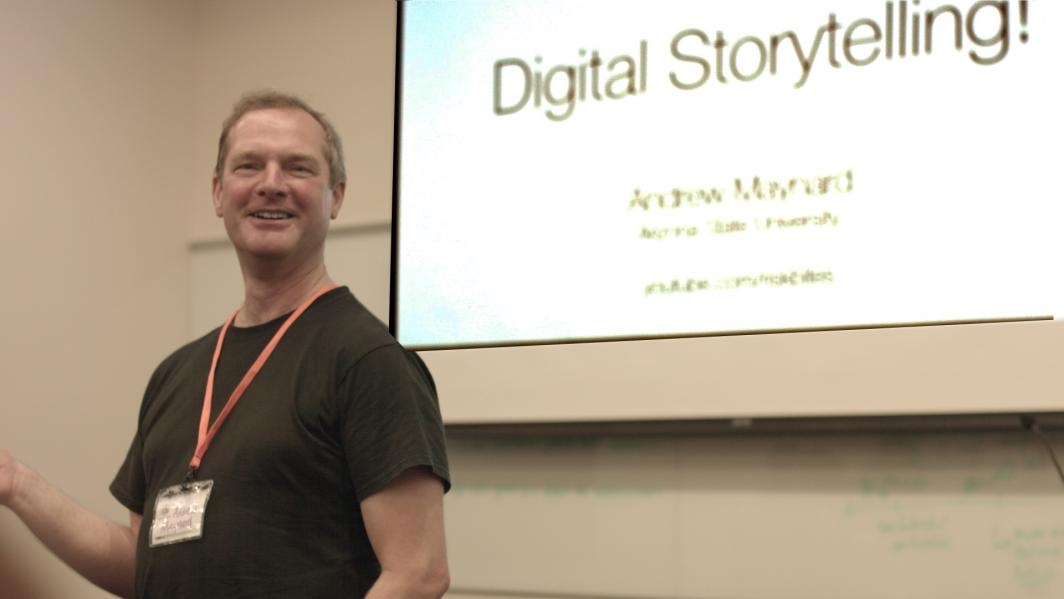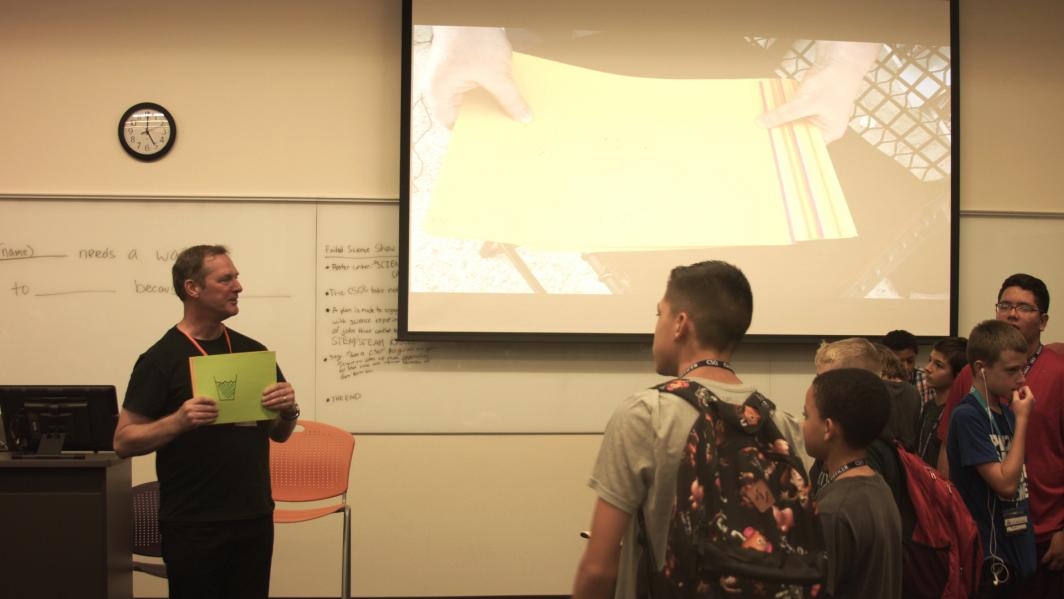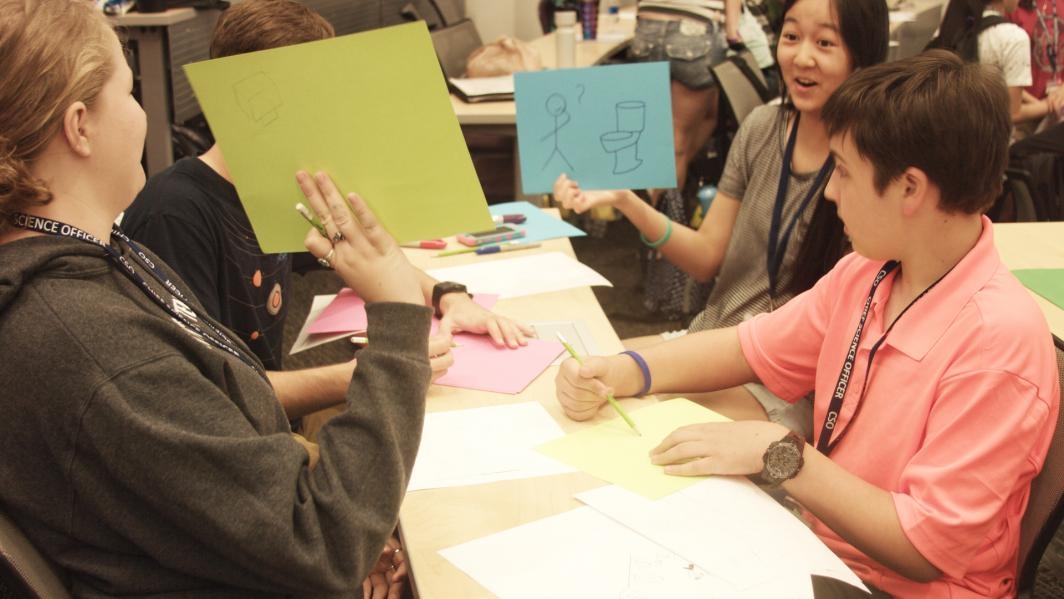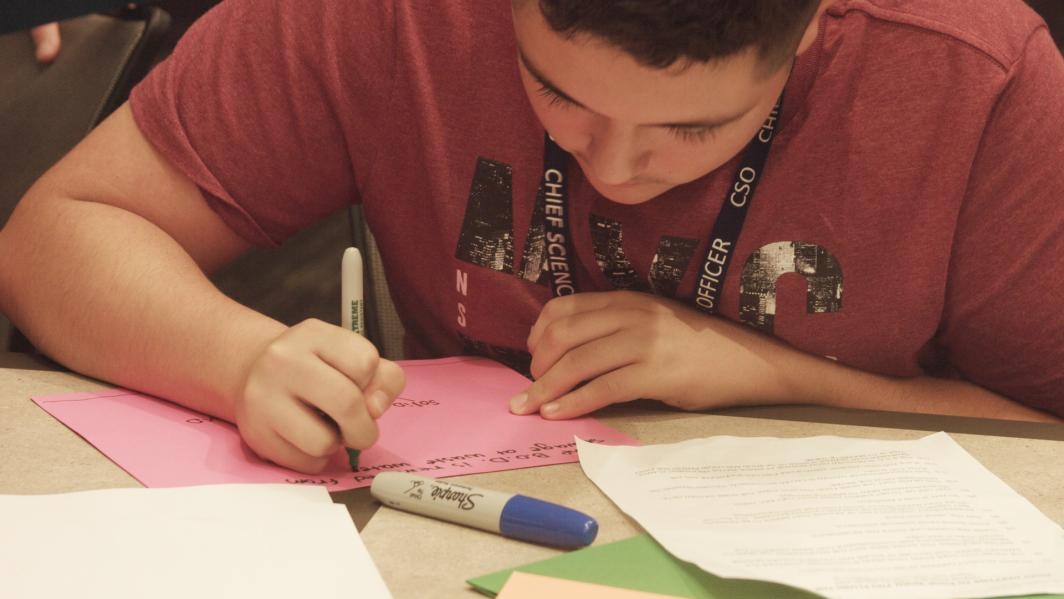Teaching kids to be #SciComm filmmakers
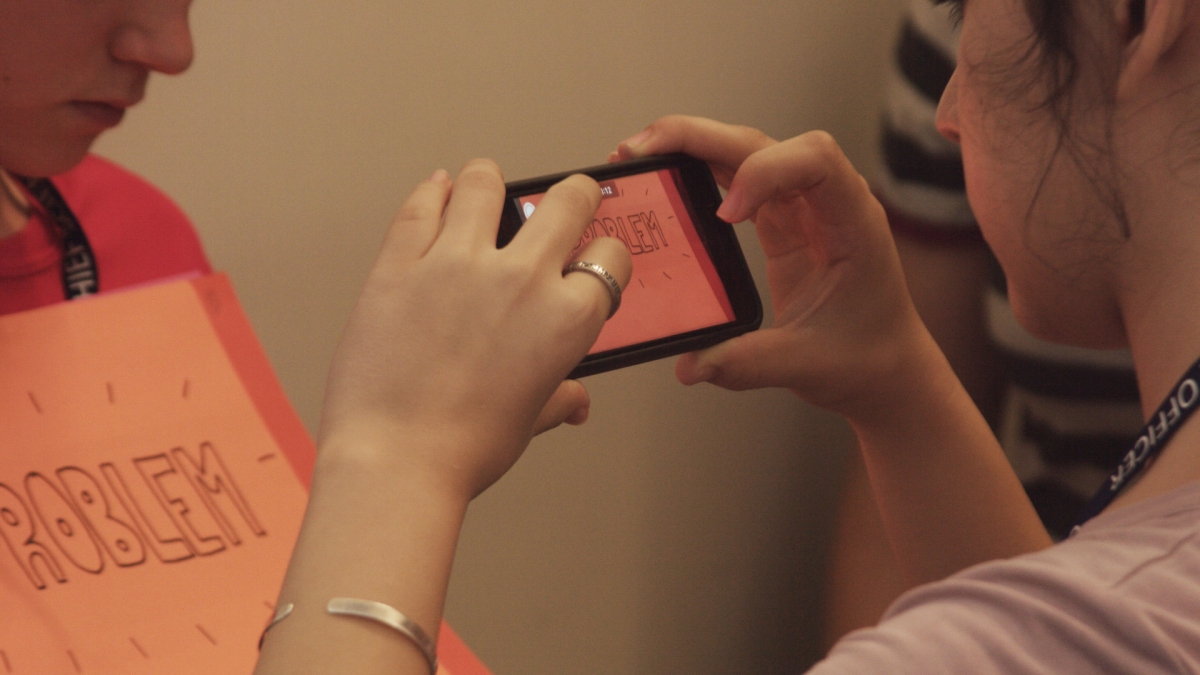
Students at the Chief Science Oficers (CSOs) Summer Institute learn about digital science storytelling by creating simple YouTube videos called "Flip Books." The class teacher, ASU Professor Andrew Maynard, provided each group with a pre-written script about a science topic, then the groups illustrated the story on colored paper. The last step was to film the sketches in chronological order on a camera phone while reading the script as voiceover narration. Photo by Grace Clark/Biodesign Institute
A Google search of the hashtag #SciComm will produce countless examples of scientists, artists and teachers discussing the rapidly growing field of science communication. Thanks to camera phones, social media and user-friendly video-editing software, science lovers are increasingly embracing online media as a platform for broadcasting and engaging around new discoveries.
Andrew Maynard is a professor at Arizona State University’s School for the Future of Innovation in Society who provides science communication training. Maynard is especially interested in video techniques and “casual communication,” such as people who casually watch YouTube. Maynard’s own YouTube channel Risk Bites features brief videos explaining the science behind risks.
While Maynard appreciates the diverse science content on YouTube, he wishes more of it was produced by professional scientists themselves.
“It’s the place everybody goes these days if they want to learn cool stuff. So, wouldn’t it be awesome if we had more scientists putting their cool stuff on YouTube?” Maynard asked.
Related: ASU prof hosts video contest to bolster science communication
That was the simple question Maynard recently posed to a group of middle and high school students at the three-day Chief Science Officers (CSOs) Summer Institute. The camp was held at Grand Canyon University in Glendale, Arizona, and offers CSO students advanced training in science communication, advocacy and career development.
Maynard’s lesson about YouTube science videos was one of several afternoon activities and involved more than 70 participants. Many students admitted they weren’t regular viewers of science videos, so Maynard began the lesson by screening three examples of popular science YouTube channels including ASAPscience, MinutePhysics and SciShow.
Maynard pointed out how many science videos use simple drawings to describe complex behaviors. He next explained that one of the easiest ways to make a science video is with a "flip book" or “flip chart” format, which is made by simply filming a series of hand-drawn sketches accompanied by voiceover narration.
The students’ in-class assignment was to split into groups of 10 and produce a brief “flip book” video using markers and colored paper. Before starting they determined which teammates would be the illustrators, narrators, director and videographer. To expedite their creative process, Maynard supplied pre-written scripts featuring three science stories the students could choose from.
While the activity may sound simple, it actually required the full two hours remaining in the session for most teams to complete the assignment and email their finished films to Maynard. The students screened their final videos at a pool party later in the evening.
The “flip book” activity is an effective technique for teaching storytelling because it provides students with both structure and creative flexibility. Students had fun storyboarding and sketching the science topics, which ranged from endangered condors to wastewater, and added dramatic flair to their voiceover narrations.
“We’re beginning to teach them how they can make videos which are compelling to an audience of their peers. It’s not that hard to make great science videos, but people have got to be shown that it’s possible for them to do it,” said Maynard.
Maynard’s appearance at the science camp is the first part of a series of opportunities for middle- and high-schoolers to be up close and personal with researchers at ASU’s Biodesign Institute. Arizona’s Chief Science Officers will spend a day this fall touring the high-tech, high-science building and learning more about saving the world with science.
